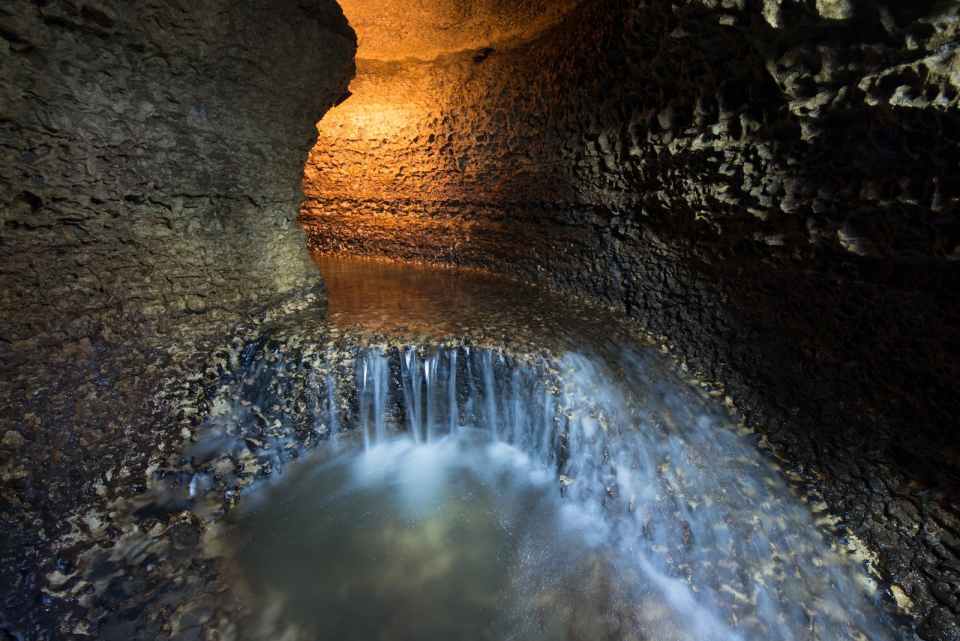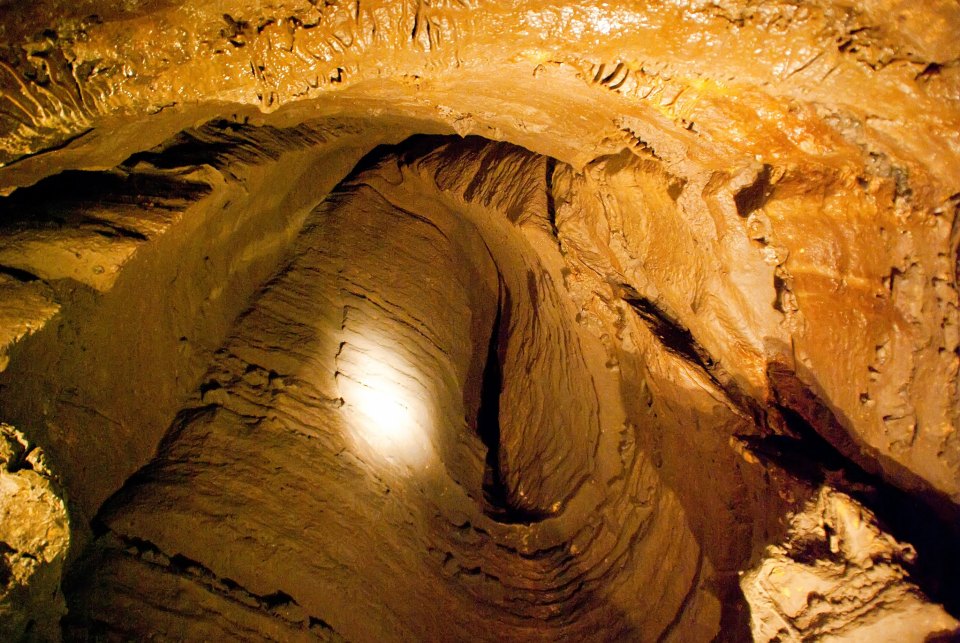Though not nearly as famous as the “other Niagara,” Niagara falls, the iconic waterfall on the border of New York and the Canadian province of Ontario, Niagara Cave, located in the tiny southeastern Minnesota town of Harmony, is nearly as impressive.

Photo by niagaracave.com
The sprawling cavern is one of the most extensive grottoes in the midwest. It features a 60-foot subterranean waterfall, pre-historic fossils embedded within the walls of the cave, unique limestone formations, towering ceilings that reach up approximately 100 feet, a resounding echo chamber, and even a working wedding chapel.
History
Niagara Cave was discovered in 1924. Local legend has it that a local farmer’s pigs left their digs at the farm and disappeared, only to end up in a sinkhole. The farmer went looking for his missing pigs and was shocked to find them alive and well, 75 feet below ground, it was at this time Niagara Cave’s large underground chamber, and its many other wonders were first unearthed.
Shortly after the cave’s initial discovery, a troika of the cave’s earliest explorers come business partners Joe Flynn, Al Cremer, and Leo Tekippe. In the early 1930s, the trio signed a lease agreement with the landowner and began developing the cave for public tours. Niagara cave opened to the public in 1934.
Since its early history, Niagara Cave has remained open to the public under three different owners. Today the cave is one of two publicly accessible caves in Minnesota.
Energy Efficiency
The Niagara cave became the first commercial cave in the world, whose energy is 100% offset by solar energy. The cave has a large photovoltaic solar panel array that produces nearly 45,000 kilowatts of energy each year.

Photo via Flickr
Geology
According to the Niagara Cave’s official website, the cave was formed as water found its way into the cracks and crevices of the limestone and slowly widened them, eventually developing them into the cave system that exists today.
The cave is likely millions of years old, as evidenced by the fossils found in the cave’s limestone layers. There are fossils of ancient aquatic lifeforms that lived in the shallow waters of the seas that once covered the mid-west and can be viewed during a cave tour. Visitors may see cephalopods, fisherites, gastro pods, horn corals, or even trilobite fossils.
Visiting Today
The Niagara cave is open seven days a week from May 1st to October 30th. For children between the ages of 3-12 a ticket costs $12, for those above…
Click Here to Read the Full Original Article at Unusual Places…